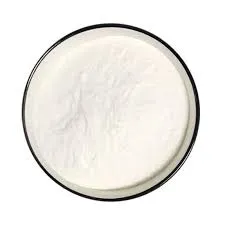
Nov . 06, 2024 05:42 Back to list
hydroxypropyl methyl cellulose ether
Exploring Hydroxypropyl Methylcellulose Ether Applications and Benefits
Hydroxypropyl methylcellulose (HPMC) ether is a versatile and widely used polymer in various industries, ranging from pharmaceuticals to food and cosmetics. This water-soluble cellulose ether is derived from natural cellulose, making it a popular choice for applications that prioritize safety and biocompatibility.
Exploring Hydroxypropyl Methylcellulose Ether Applications and Benefits
In the realm of food technology, HPMC serves as a thickening and stabilizing agent. It is often employed in various products such as sauces, dressings, and baked goods. Its ability to retain moisture and enhance texture makes it a valuable ingredient for improving the mouthfeel of low-fat and gluten-free products. Additionally, HPMC acts as a binder in meat products, ensuring uniformity and improving the overall quality of the end product.
hydroxypropyl methyl cellulose ether

Besides its applications in pharmaceuticals and food, HPMC is also extensively used in cosmetics and personal care products. It is commonly found in lotions, creams, and gels, where it acts as a thickener and helps improve the texture and spreadability of these formulations. Its film-forming properties contribute to the product’s aesthetic appeal by providing a smooth and even finish on the skin. Moreover, HPMC is utilized in hair care products, offering conditioning benefits and enhancing the overall performance of shampoos and conditioners.
Environmental concerns have driven the search for biodegradable alternatives in various industries. The renewable nature of HPMC, derived from naturally occurring cellulose, aligns well with these sustainability goals. Its biodegradability and non-toxic properties make it a preferable option compared to synthetic polymers, contributing to reduced environmental impact.
In construction, HPMC is used as a key ingredient in dry-mix mortars, enhancing workability and adhesion. Its water-retaining capacity ensures that mortar remains workable for extended periods, allowing for ease of application. This property is especially valuable in situations where extended working times are necessary, such as in large-scale construction projects.
In conclusion, hydroxypropyl methylcellulose ether is a multifunctional polymer that bridges various industries through its unique properties and applications. Its role as a thickener, binder, and stabilizer highlights its versatility, while its biocompatibility and biodegradability align with current environmental standards. As industries continue to innovate, HPMC will undoubtedly remain a crucial ingredient in formulating products that are effective, safe, and sustainable. Whether in pharmaceuticals, food, cosmetics, or construction, the significance of HPMC cannot be overstated, making it a vital component of modern formulations.
-
Versatile Hpmc Uses in Different Industries
NewsJun.19,2025
-
Redispersible Powder's Role in Enhancing Durability of Construction Products
NewsJun.19,2025
-
Hydroxyethyl Cellulose Applications Driving Green Industrial Processes
NewsJun.19,2025
-
Exploring Different Redispersible Polymer Powder
NewsJun.19,2025
-
Choosing the Right Mortar Bonding Agent
NewsJun.19,2025
-
Applications and Significance of China Hpmc in Modern Industries
NewsJun.19,2025







